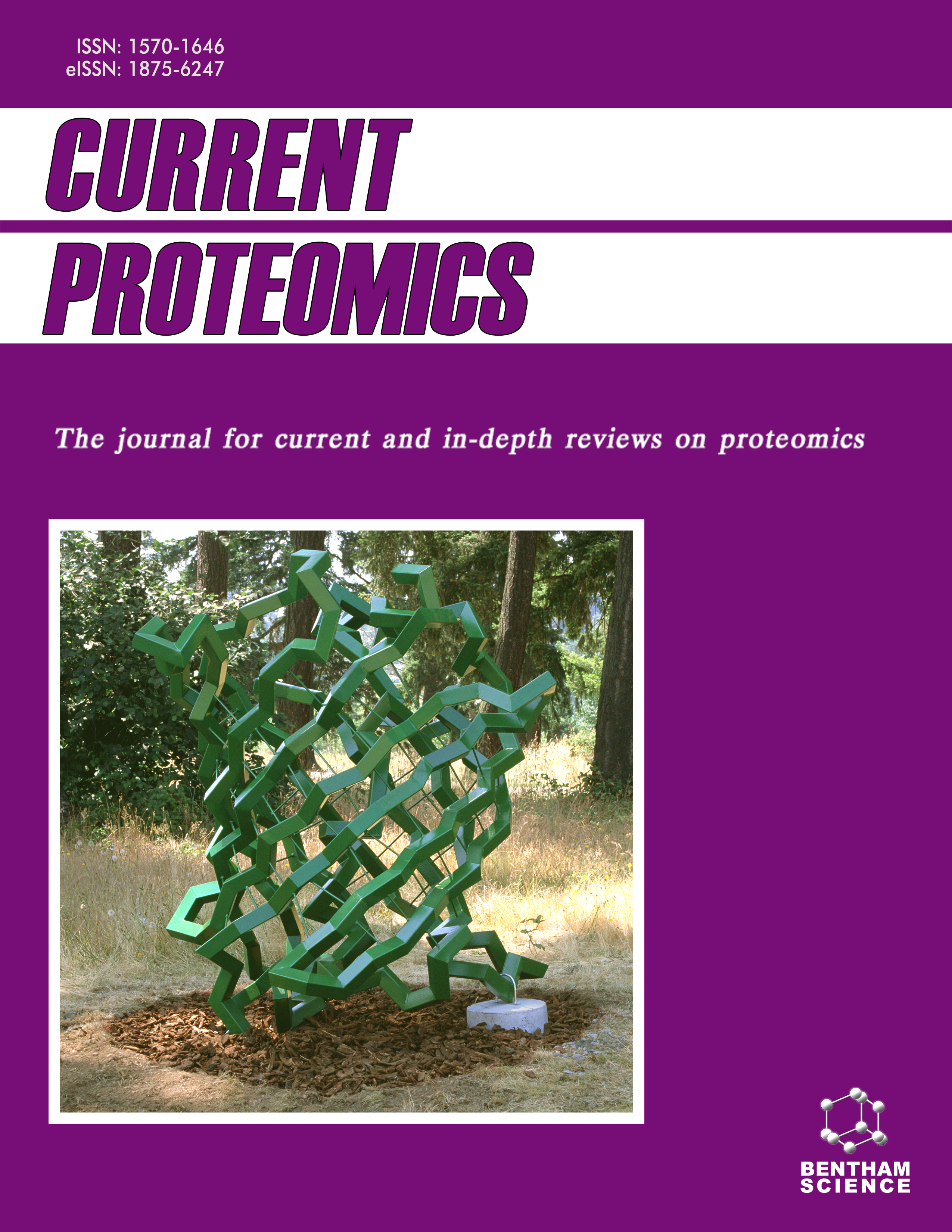Current Proteomics - Volume 21, Issue 5, 2024
Volume 21, Issue 5, 2024
-
-
In-silico Analysis of Peroxidase from Raphanus Sativus
More LessAuthors: Shilpa Saikia, Meera Yadav and Hardeo Singh YadavBackgroundIn-silico study plays an important role in bioinformatics. It is a fast-expanding field to modelling, predicting and explaining biological activity at the molecular level using computational methods. Peroxidases are heme or non-heme-containing key antioxidant enzyme belonging to the oxidoreductase family. They can bioremediate the different environmental pollutants such as dioxins, petroleum hydrocarbons, synthetic dyes, herbicides, pesticides, chlorinated hydrocarbons, different phenolic and nonphenolic compounds etc. The current work aims to extend knowledge among researchers in better understanding structure of peroxidase purified from Raphanus sativus by analysing it’s physicochemical properties, secondary structure prediction, and 3D modelling of protein sequences and its validation using a variety of conventional computational methods.
ObjectiveUsing bioinformatics techniques, it is feasible to figure out the relationship between sequence, structure, and function using enzyme protein sequences. To improve catalytic efficacy, thermostability, structure prediction, and validation, in-silico studies of the protein sequences of several industrially important enzymes have been performed recently.
MethodsThe physical and chemical parameters of radish peroxidase was analysed by using protparam tool-Expasy. SOPMA, SWISS MODEL, PROCHECK, ERRAT and Verify3D tools were used for structural analysis and validation of peroxidase protein sequence of Raphanus Sativus. The Molecular Evolutionary Genetics Analysis (MEGA 11) tool was used to align the protein sequences automatically and manually using the query sequence and peroxidase from various plant sources. Interaction of Radish peroxidase with the different organic substrates like guaiacol, o-cresol, m-cresol, p-cresol, hydroquinone, catechol, resorcinol, benzaldehyde and aniline were analysed by molecular docking technique.
ResultsThis research gave critical information regarding the properties and functioning of Raphanus sativus peroxidase. The computational molecular weight for the query protein sequence of radish peroxidase was found to be 37.503 KDa. The analysis of secondary structure prediction using SOPMA tool revealed that random coil (Cc) was present in the highest percentage as 39.18%. From the instability index (II) value and the aliphatic index value it was confirmed that the protein was slightly unstable but thermally stable in a wide range of temperature. The phylogenetic tree constructed by Molecular Evolutionary Genetics Analysis (MEGA 11) server revealed that the peroxidase and other plant peroxidases had been evolved from a common ancestor. Molecular docking analysis revealed that all the ligand had binding energy > -4.0 Kcal/mol. The interaction involved in the docking of radish peroxidase with selected ligands were conventional hydrogen bond, pi-cation, alkyl, pi-alkyl, pi-pi stacked, pi-sigma, carbon hydrogen bond, pi-lone pair.
ConclusionIn summary, these in-silico investigations provide a strong basis for carrying out wet-lab experiments to boost production, research for novel sources with a metagenomics strategy and attempt directed evolution to include desired functional features. From this study, we found the active site of the enzyme and the key amino acid residues that are used in the enzyme-ligand interaction. The novel information presented in this work will promote proteomics research and the development of novel bioinformatics techniques. The investigation of enzyme-ligand interactions will aid in the creation of a fresh approach to the synthesis of organic molecules.
-
-
-
Identification of a Ubiquitination-Related Signature for Ovarian Cancer Based on 101 Combinations of Machine Learning Methods
More LessAuthors: Miao He, Yu Guo, Minmin Yu and Changsong LinBackgroundOvarian cancer is the third most common gynecological cancer worldwide. The majority of ovarian cancer instances are identified at later stages of progression, resulting in a significantly elevated mortality rate. Additionally, the absence of reliable prognostic biomarkers significantly limits the effectiveness of prediction and personalized treatment approaches. Ubiquitination, a protein modification process intricately associated with diverse tumor-related biological pathways, occupies a central position within the tumor microenvironment (TME). However, its specific mechanisms in ovarian cancer remain inadequately understood.
MethodsIn this study, we explored ubiquitination-related genes at both single-cell and bulk transcriptome levels utilizing algorithms, such as AddModuleScore, single-sample Gene Set Enrichment Analysis (ssGSEA), and Weighted Gene Co-Expression Network Analysis (WGCNA). We then designed a novel machine learning framework featuring 10 algorithms and 101 combinations to establish a Ubiquitination-Related Signature (URS), which was validated in both training and external datasets. Additionally, we developed a comprehensive nomogram for clinical prognosis based on the URS. To thoroughly investigate prognostic characteristics, we applied multi-omics data. This analysis provided a deep understanding of the prognostic signature. Furthermore, we assessed the response of different risk subgroups to immunotherapy and identified suitable drugs for specific risk profiles, thereby advancing personalized medicine.
ResultsIn this research, we discovered 35 ubiquitination-related genes significantly linked to the prognosis of ovarian cancer. Our univariate and multivariate assessments indicated that the low-risk cohort exhibited a better survival rate than the high-risk cohort, suggesting the potential of the model as an independent prognostic marker. The nomogram based on the URS offers a quantitative tool for clinical applications and can be effectively utilized in healthcare settings. Moreover, we observed significant differences in biological functions, mutation patterns, and immune cell infiltration within the tumor microenvironment between the high-risk and low-risk groups. Additionally, we highlighted potential drugs tailored for specific risk categories.
ConclusionWe developed and validated a signature related to ubiquitination for ovarian cancer, which shows potential as a reliable predictor of prognosis. Investigating ubiquitination paves the way for innovative clinical strategies and novel anti-tumor therapies.
-
Volumes & issues
-
Volume 21 (2024)
-
Volume 20 (2023)
-
Volume 19 (2022)
-
Volume 18 (2021)
-
Volume 17 (2020)
-
Volume 16 (2019)
-
Volume 15 (2018)
-
Volume 14 (2017)
-
Volume 13 (2016)
-
Volume 12 (2015)
-
Volume 11 (2014)
-
Volume 10 (2013)
-
Volume 9 (2012)
-
Volume 8 (2011)
-
Volume 7 (2010)
-
Volume 6 (2009)
-
Volume 5 (2008)
-
Volume 4 (2007)
-
Volume 3 (2006)
-
Volume 2 (2005)
-
Volume 1 (2004)
Most Read This Month


